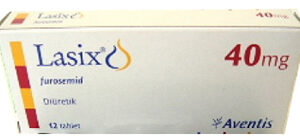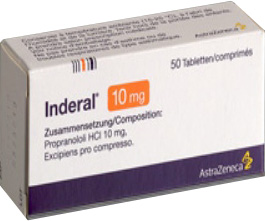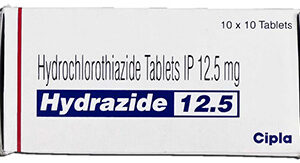Furosemide Overview
Furosemide, the pharmacological cornerstone in the class of medications known as loop diuretics, operates principally by inhibiting the absorption of sodium and chloride in the kidney’s loop of Henle. This potent diuretic effect leads to increased urine output, reducing fluid in tissues and the circulatory system, and is typically prescribed for managing edema and hypertension.
Furosemide Uses
This medication is routinely prescribed for fluid retention (edema) in individuals suffering from congestive heart failure, liver disease, or kidney disorders. Besides its primary role in edema management, Furosemide is also indicated for the treatment of high blood pressure, thereby reducing the risk of strokes, heart attacks, and kidney issues.
Dosage & Administration
The dosing of Furosemide must be individualized to patient response. For edema, adults may commence with 20 to 80 mg per day as a single dose, potentially adjusted incrementally by 20 to 40 mg every 6 to 8 hours until the desired response. In the instance of hypertension, initial doses are often smaller, typically around 40 mg twice a day. Furosemide is available in tablet form and as an oral solution, as well as injectable forms for more urgent fluid removal. It is imperative to take this medication as advised by your healthcare provider and not to alter the dosage without consulting them.
Contraindications
Utilization of Furosemide is contraindicated for patients who display an inability to produce urine (anuria), those who have developed allergies to it, or anyone with a history of hypersensitivity to sulfonylureas, as Furosemide is a sulfonamide derivative. Additionally, caution is advised against using this medicine during pregnancy unless absolutely necessary.
Precautions & Warnings
Patients should be observed for indications of fluid or electrolyte imbalance, namely hyponatremia, hypochloremic alkalosis, and hypokalemia. Regular monitoring of serum electrolytes is recommended. In those with known hepatic impairment or renal dysfunction, careful dose titrations are necessary, as these patients may experience alterations in diuretic response. Patients with prostatic hypertrophy or impairment of micturition need close monitoring due to the risk of urinary retention. Precipitation of diabetes could occur in patients with borderline diabetes mellitus.
Interactions
Furosemide interacts with a multitude of other drugs. Concurrent use with aminoglycoside antibiotics may increase the potential for ototoxicity or nephrotoxicity. NSAIDs can reduce the diuretic, natriuretic, and antihypertensive effects of loop diuretics. Concomitant use with antihypertensives can lead to exacerbated hypotension. Additionally, Furosemide can alter the effects of antidiabetic drugs and may increase the toxicity of certain drugs such as lithium and digoxin if not adequately monitored.
Adverse Reactions
Common unwanted effects associated with this drug include electrolyte imbalance, dehydration, and hypovolemia, potentially triggering circulation collapse and possibly venous thrombosis and embolism. Ototoxicity, manifested by tinnitus, hearing impairment, or even permanent loss of hearing, has also been reported. Gastrointestinal disturbances, vertigo, dizziness, and blurred vision are frequent. Patients may also experience hypersensitivity reactions.
Overdose Management
Symptoms of overdose may include profound diuresis with water and electrolyte depletion. In treating an overdose, supportive and symptomatic measures should be adopted, with particular attention to correcting electrolyte and fluid imbalances. The use of Furosemide may be halted, depending on the severity of the symptoms. In case of significant loss of blood volume and electrolytes, intravenous fluid therapy and monitoring in a hospital setting may be required.
Storage Guidelines
Keep Furosemide in a secure location, out of reach and sight of children, ideally at room temperature away from moisture, heat, and direct light. Do not freeze the oral solution or injectable forms, and be sure to discard any expired or no longer needed medication properly.
Patient Information
Patients should be advised to take Furosemide as prescribed and specifically instructed not to alter the dose or frequency without prior discussion with their clinician. They should be made aware of the possibility of frequent urination, a typical side effect, and plan their activities accordingly. Patients should be educated on the symptoms of electrolyte imbalance such as dry mouth, thirst, weakness, drowsiness, restlessness, muscle pains or cramps, and to seek medical assistance if they experience such symptoms. They should also be counseled on maintaining an appropriate fluid intake, diet, and the importance of regular medical reviews including electrolyte panels.
FAQs
Below are some common inquiries patients might have about Furosemide:
Can I take Furosemide during pregnancy?
Furosemide should only be used in pregnancy if the potential benefit justifies the potential risk to the fetus. Always discuss with your healthcare provider.
What should I do if I miss a dose?
If you miss a dose of Furosemide, take it as soon as you remember. However, if it’s nearly time for your next dose, skip the missed dose and resume your usual dosing schedule. Do not double doses.
Is it safe to consume alcohol while on Furosemide?
Alcohol can increase the risk of side effects such as dizziness. Caution is advised when consuming alcohol during treatment.
How will Furosemide affect my daily life?
You may experience increased urination which could affect your daily activities. Plan your schedule to accommodate these changes, and consult with your healthcare professional regarding diet, lifestyle, and the understanding of possible reactions to the medication.






Reviews
There are no reviews yet.